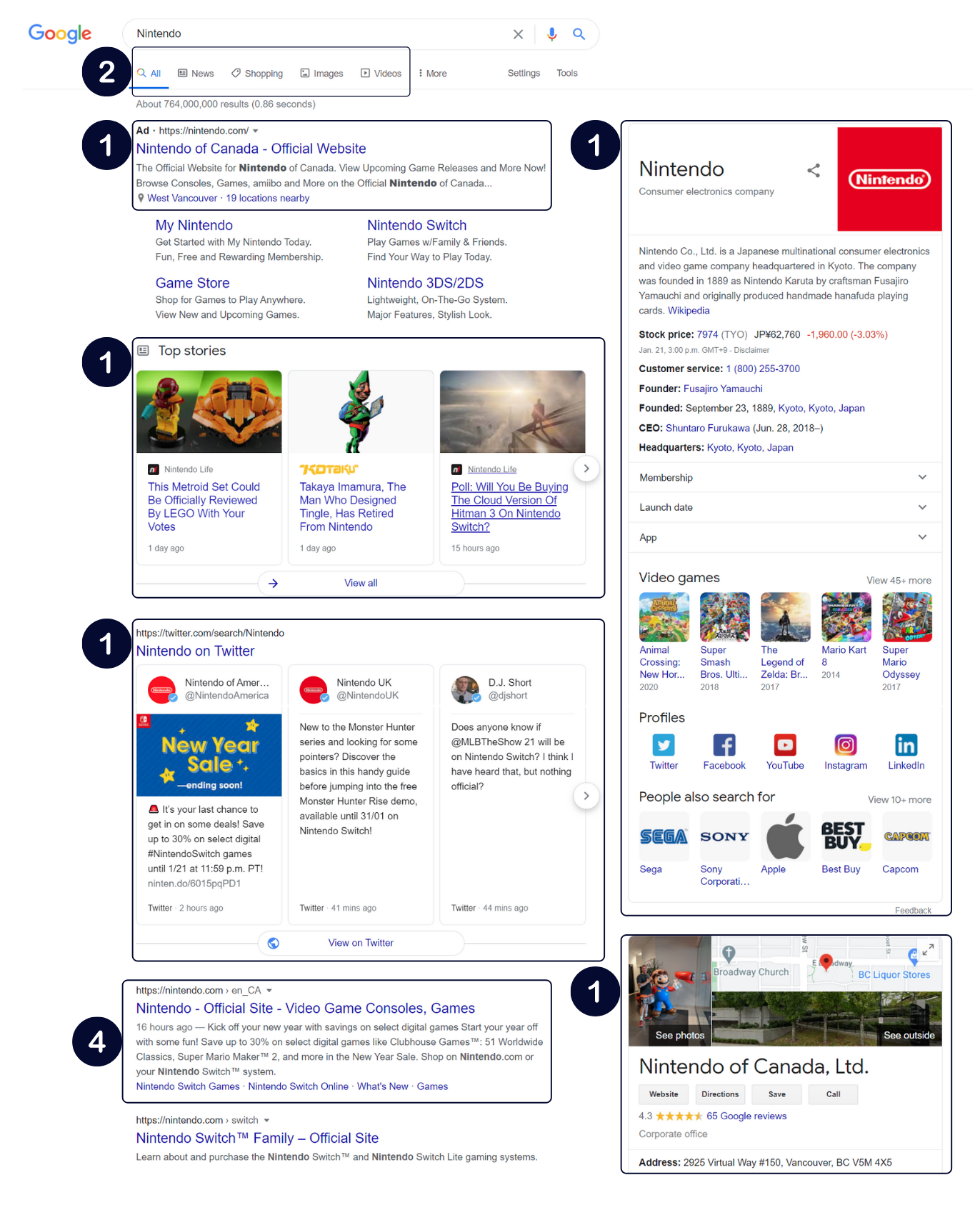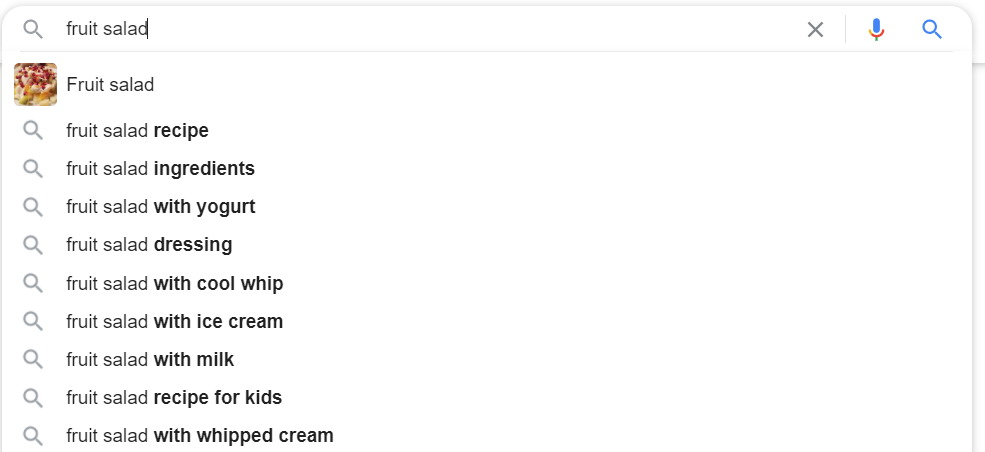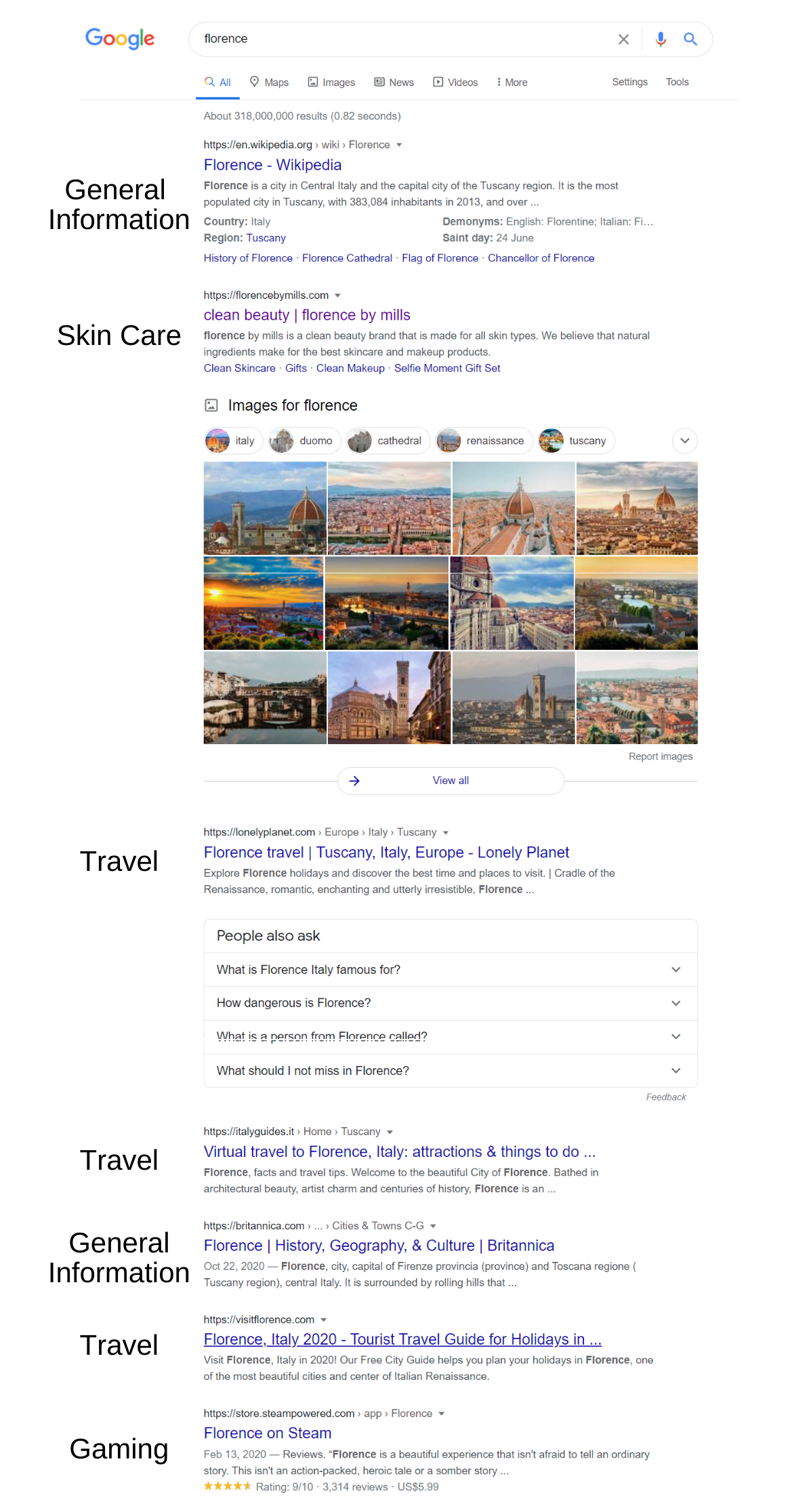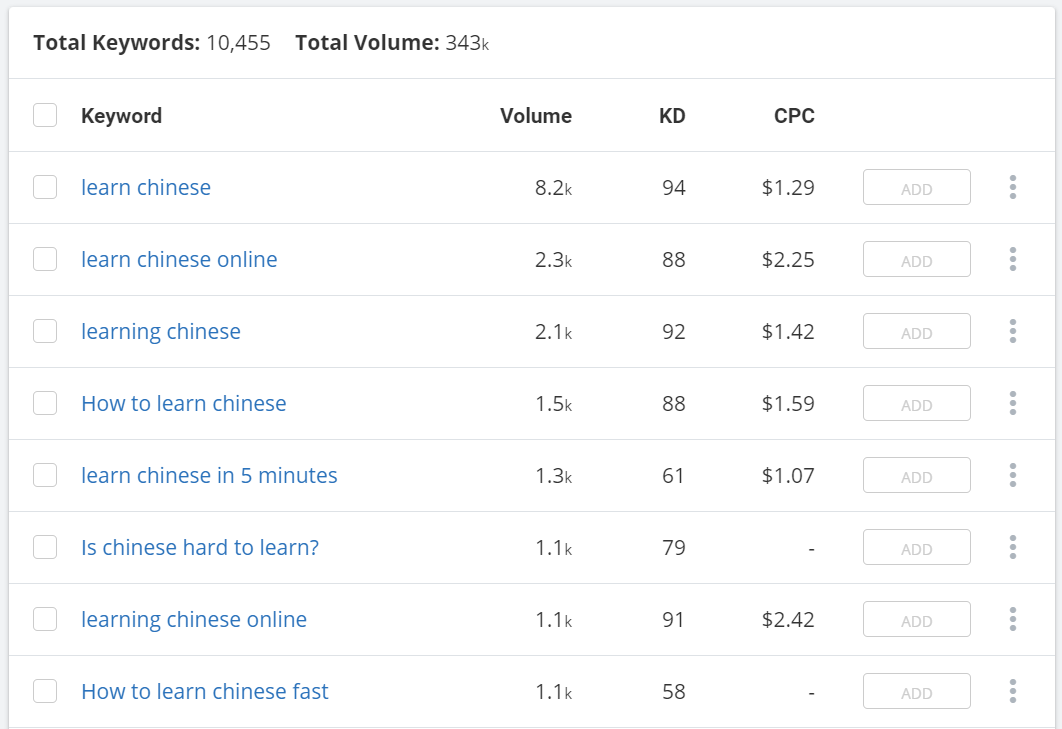Even with the best marketing magic, we can't read minds. (It only seems that way at times.) That's because content marketers are doing their best to determine search intent in what they create.
Search intent analysis is the art of understanding the people behind a Google search. Who are they? What do they want? Why are they searching for this keyword?
If you can determine search intent, it helps you deliver content that searchers want. This, in turn, helps us grow our audience and improve your SERP rankings. Before writing this article, we analyzed search intent for "search intent analysis." We did that so that our writing could speak directly to you: a professional digital marketer always looking for ways to write better content.
Step 1: Evaluate Your Keyword
What you will learn: How to define the search intent and audience behind a keyword
Assess a keyword's phrasing and search volume history to understand who is searching for these terms, and why.
What type of search is it?
To understand intent, try placing your keyword phrase into one or more of the four primary search intent categories:
- Informational: Looking for answers (Example: When was America founded?)
- Transactional: Looking to buy (Example: Promo code for MacBook)
- Navigational: Looking to go somewhere on the web (Example: Facebook login)
- Commercial Investigation: Looking to learn more before buying (Example: Canva review)
Sometimes, the search intent will be obvious. The keyword phrase "buy Nike shoes" is transactional; this person wants to buy Nike shoes.
When you understand audiences' intent clearly, you can create materials exactly for them. To match our audience's search intent, we're providing five clear and actionable steps to help you create high-value content that ranks well.
Other times, you won't have enough information to make any guesses. If someone searches for only "Nike," you won't be able to tell if they plan to buy shoes, research the shoe company, or learn more about the ancient Greek god. For long-tail keywords, tear apart wording to get a glimpse at searchers’ intent. The terms (films vs. movies) and modifiers (best/cheapest) surrounding the primary keyword are all hints that we can use in our research.
For example, in the keyword phrase best raincoats for kids, "best" tells us that searchers will want to see reasons why these coats are superior, and "for kids" tells us about our audience, probably parents or older relatives. Overall, we can infer commercial investigation intent in this search.
When looking at the top-ranking site for this keyword, we can see these search intents have been satisfied. There is a list of 15 raincoats for kids with a description and list of features. For people willing to buy, there are even affiliate links to the sellers.

What kind of volume patterns are there?
Keyword traffic patterns can also help us discern search intent. To see how, let’s consider the keyword phrase: "buy school supplies."
This line represents the number of times "buy school supplies" was searched every week over the last five years. This graph's most notable feature is the clear spike every July/August, presumably before school starts. From these spikes, we can infer people searching for this term are parents preparing their kids for the new school year.
You have probably noticed that 2020's spike is quite a bit smaller. But why the change? With fewer students attending classes in school due to the pandemic, perhaps fewer school supplies were needed. Or maybe this indicates a more permanent shift in how people search for school supplies.
Doing this kind of analysis can help you start to understand who these searchers are. And the best news is that this data is free. Head over to Google Trends and type in your keyword, and Google will give you a breakdown of how many people are searching for this term weekly over a customizable time period.
Step 2: Check the SERP Results
What you will learn: How to refine your search intent findings and build a map of your keyword’s related topics
According to Larry Page (one of the cofounders of Google), Google's SERP is designed with the goal of "understanding exactly what you mean and giving you back exactly what you want." This makes every SERP a gold mine of information on searchers' intents. A little reverse engineering can help us learn about who these searchers are and what they want.
How Has Google Designed This SERP to Match Intent?
On the SERP, the most important things to note are the features on the page—ads, bolded words, and so on—along with the order of the Google search types. By looking at these elements and questioning their arrangement, you can begin to see what kind of content you will need to make to help searchers.
Below, we have the SERP for the keyword "Nintendo" and a breakdown of its contents.

SERP features are nonorganic search results on the SERP page. They are Google’s way of giving answers before a searcher even needs to click a link. This page has five SERP features:
- The Knowledge Panel (top-right) provides basic information about Nintendo as a company.
- The Top Stories Box (middle-left) tells us that some searchers are looking for recent news about the keyword.
- The Twitter Pack (below Top Stories) tells us that some searchers are interested in Nintendo’s tweets.
- The Local Pack (bottom-right) tells us that some searchers want to visit a Nintendo building.
- Google Ads (top-left) indicate purchasing intent.
These intents here are all quite mixed. However, this is normal for a broad keyword like "Nintendo."
- Order of Google Search Types: Google tells us the importance of different kinds of content by rearranging the search types at the top of the SERP. In this example, Google has made the order: News, Shopping, Images, Videos. When noting the order for your keywords, consider how your content can fulfill these content priorities.
- Snippets are the most pertinent information on a page for that keyword, according to Google. Write down the main points that come up in these snippets, and consider how you can write better snippets that more directly satisfy searcher intents. In this case, the snippet announces a sale on games, reaffirming the buying intent behind this search.
Google does not make their SERP’s randomly. Learning about the anatomy of these pages can help you decide on what your content is going to look like for this keyword.
What does Google Think Is Related To This Subject?
Google doesn't just rank content based on how often it includes single keywords (i.e., keyword stuffing). Instead, it prioritizes well-written, relevant pages from sites that are authorities on the keyword's subject.
One way to show Google that your page meets these criteria is to have your website talk about and explore related keywords, concepts, and themes. In SEO, this is called keyword clustering.
Check the keyword’s SERP to find related terms and concepts that will need to be covered in your article or future articles to build up your authority in the subject. Elements you should check for include the following:
- The bolded words on the page: These are the phrases that Google considers related or synonymous with your keyword. Putting these words in your copy will strengthen your keyword cluster and show your relevancy to Google.

- The “People Also Ask” Section: Google believes these questions are the most relevant for your keyword. To be comprehensive, consider answering a few of these questions in your article or including them as headers.

- Search Bar Auto-Complete: This feature is based on predictive analysis of search trends. Play with the search bar, see where Google believes searchers want to go, and then incorporate what you learn into your own work.

If you know how to listen to it, Google’s SERP can tell you almost everything you need to know about search intent. Take your time, and read through what it has to say, and then use that information to inform your own work.
Step 3: Explore the Top 5 Results
What you will learn: How to recognize what kind of content is satisfying user intent for this keyword
Exploring the top-ranking sites on the SERP will show you what kind of content is working. Establish a baseline that you need to meet and then exceed to get into the top spots.
What is the average length of these articles?
People think that longer content is better, but that's not always true. Google has even said that word count is not a factor in ranking. Google just wants you to answer questions well.
Searchers who are short on time want quick answers, not drawn out explanations. Average length can help you determine searchers' time expectations for your keyword.
Consider the keyword "tallest mountain in the world," which has a search volume of 24,600 in the US and a difficulty of 97/100 on SpyFu. The top three organic search results (after Wikipedia) have an average word count of 994. The top page has only 705 words.
The number one spot for this search comes from the National Ocean Service.

This page efficiently gives searchers what they came to find. If you want to outrank this page, then you need to consider how you can better explain this concept or provide more value.
What Do These Pages Have in Common?
The top five pages on Google reflect what Google sees as valuable on this topic. Identify what qualities these posts share to determine which topics and elements your content should also include—and how you can do better. Consider asking these questions:
- What type of article is it? (listicles, guides, etc.)
- What topics do the top posts cover?
- What types of content (writing, images, videos) do the top-ranking posts include?
Use the answers to these questions as a jumping-off point for your own content.
Who is the audience?
Paying attention to who the top pages are written for can help determine who you need to address in your own work.
Consider:
- Who are they?
- How old are they?
- Where are they? (country, city/countryside)
Treat this as you would building a buyer’s persona—the more detailed, the better.
Is User Intent Fragmented?
Good content is written for a specific reader, but some keywords are too general or ambiguous to have a specific audience. This phenomenon is called fragmented user intent. It’s common with short-tail keywords or in cases where a keyword can have multiple meanings (think orange, the color and the fruit).
Fragmented keywords are hard to rank for. How do you write for an audience if everyone's search intent is different? We can see what fragmentation looks like in the keyword "Florence."

If you want to rank for "Florence," you will have a hard time because the term is so broad. With websites for travel, general information, beauty products, and even gaming, it’s clear that there are multiple search intents here.
Building a page that captures all of them would be near impossible and not overly useful.
If you see fragmentation, a more specific long-tail keyword could help you narrow down your audience. They may have lower overall search volume, but they generally convert at higher rates.
Step 4: Consider Your Audience, and Find Ways to Stand Out
What you will learn: How to pick keywords that suit your niche and how you can outdo the competition
Next, you want to think about what your website can bring to the table. What strengths, skills, or expertise do you have to bring more value to the current SERP?
Does the Keyword Fit Your Audience?
In doing search intent analysis, you may realize that the keyword you thought you wanted encompasses too many people who don’t fit your target audience. Try to find a more narrow phrase that’s a better match for your ideal searcher.
This tactic is also useful when the domain authority of the SERP is too high for you to reasonably top. Start with niche long-tail keywords to build domain authority over time, so you can eventually rank for broad, high-value, short-tail keywords. You should consider:
- Who frequents your website, and what do they want to see?
- What does your expertise allow you to have authority on?
- How can your website have a take that is both new to the SERP and authentic to your brand?
If your website provides language tutoring for business people, you may want to target the keyword “learn chinese.” But "learn chinese" has a high keyword difficulty (KD). With tools like SpyFu, you can explore more long-tail options that might be easier to reach the top 10 on Google and better fit your niche.

So instead of “learn chinese,” you could target “learn chinese in 5 minutes” or “how to learn chinese fast.” These keywords could help you target business people who want to learn a language but may not have the time to spend hours a day learning it.
How Can You Improve the Searchers Experience?
You've seen what other people are doing, and now you want to beat them. What can you do differently that will set you apart from the pack? Two primary questions to ask yourself:
- What new ideas, topics, or content can you address in your work?
- Can you present the ideas that other top-ranking posts address in a new and better way?
To explore all of the different ways you can address a keyword, consider using the research tool Answer the Public. It visualizes and categorizes a variety of queries related to a keyword, so you can easily brainstorm topics that top-ranking posts aren’t addressing.

You also want to focus on making your answer better than the rest of the SERP. Here are some ways to do this:
- Add video content (69% of people would rather watch a video when learning about a product or service)
- Provide original research
- Provide free downloads, ebooks, webinars, etc.
If all you do is copy what already works, you won’t reach the top of the SERP. So, get creative, and consider what you can add for your readers.
Step 5: Monitor and Adjust Your Search Intent Analysis Strategy
What you will learn: How to monitor your article so that you can adjust it and improve on your SERP rankings
Make sure to monitor your post's performance and keep an eye on Google and the top five to make sure the search intent hasn't changed. Your post may not make it to the first page of Google at first, but the data you get may help you climb the rankings later.
Have there been changes to the SERP?
Google is always tweaking its algorithm to anticipate searchers' intent better. Check for Google search engine updates and the keyword's SERP periodically to determine if you should adjust your own page. You should ask yourself:
- Have the top five changed?
- Are there different features, ads, or questions on the SERP?
- Has anything happened that could have changed this keyword's audience?
Consider the keyword “karen.” It was once just a normal name, but now it is a wildly popular internet term. Google's SERP has changed to reflect this.

The graph below shows the ranking history of the current top 10 of the SERP for the keyword “karen.” As you can see, only one of the current top 10 spots has been ranking for more than about a year.
Like “karen,” your keywords may change too, so it's important to monitor the SERP or even set Google Alerts on important terms.
What Does Google Analytics Tell you?
Monitor Google Analytics to check who is reading your content and whether they stay engaged on the page.
To learn about who is reading your content, go to Analytics’ Demographics Overview by clicking on Audience>Demographics>Overview.

For page-specific metrics, select Audience>Demographics>Age/Gender. Then, add the secondary dimension "Page."


To check engagement, navigate to “bounce rate” and “average time on page” statistics by clicking on Behavior>Site Content>All Pages.

There is so much you can learn about your website on Google Analytics, but it can be hard to learn how to navigate it all. If you are new, you should consider taking Google's free course Analytics for Beginners.
Where Are People Clicking?
Heatmaps allow you to see where people are focusing and clicking on your page. They can be useful tools to refine your content, removing pieces that don't work and expanding on places that people are interested in.
Here are the most popular heatmaps you can use right now:
Refining your page can be a never-ending process. To do the work, you need to know the data, and that’s where these tools come in. Anything you learn about how people are interacting with your content will help you optimize and improve your page’s overall search experience.
Conquer Google with Search Intent Analysis
Search intent analysis is more than just copying the SERP. It's getting into the minds of a million searchers and giving them the things they want (and some things they don't yet know that they want).
It may not be real mind-reading powers, but search intent analysis is the next best thing for content marketers.
Use these steps to understand what searchers are looking for, and craft content that outshines any competition. We look forward to seeing you atop the SERP rankings soon!

